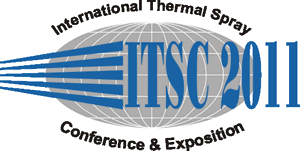
|
2678 |
|
Precipitate formation and evolution in solution precursor plasma spraying (SPPS) |
|
Gabriele Bertolissi* / Department of Materials and Environmental Engineering, University of Modena and Reggio Emilia, Italy Christophe Chazelas / University of Limoges, SPCTS, France Giovanni Bolelli/ Department of Materials and Environmental Engineering, University of Modena and Reggio Emilia, Italy Michel Vardelle/ University of Limoges, SPCTS, France Luca Lusvarghi/ Department of Materials and Environmental Engineering, University of Modena and Reggio Emilia, Italy Armelle Vardelle/ University of Limoges, SPCTS, France |
|
This study aims to investigate the fundamental reactions which, in the solution precursor plasma spraying (SPPS) process, lead to the conversion of the precursor salts into solid material deposited onto the substrate. As a model system, aqueous solutions of Zr-nitrate with different solute concentrations were investigated. The research specifically focused on the distinction between phenomena occurring in-flight and phenomena occurring onto the substrate. The methodology used in the study involved two stages. The first consisted in investigating the behavior of the solution and determine the critical temperatures of the solvate. For this purpose, on the one hand, liquid precursor droplets were laid onto stainless steel substrate, heat treated in electric furnace at different temperatures and heating rates and examined by SEM, micro-Raman spectroscopy and grazing incidence X-ray diffraction (GI-XRD). On the other hand, the evolution of precursor droplets during heating was analyzed in situ using an environmental scanning electron microscope (ESEM) and micro-Raman spectrometer equipped with heating stages. The second stage dealt with plasma spraying of the liquid precursor. The morphology and structure of single splats, deposited onto smooth stainless steel substrates by performing single plasma torch scans, were characterized by SEM (both on the surface and on cross-sections obtained in situ by Focused Ion Beam cutting), GI-XRD and micro-Raman spectroscopy and were compared to the previous results, in order to evaluate the conversion degree attained by the precursors during the in-flight period. By performing two torch scans in front of the substrate, the further conversion of partly un-pyrolised material because of re-heating by the torch could be examined. |